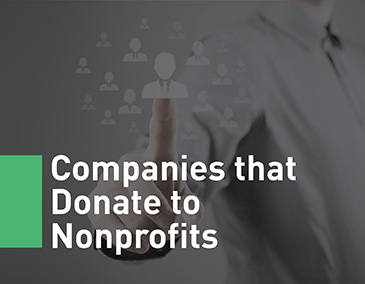Challenge Grant Basics
What are Challenge Grants?
We offered a short definition of challenge grants earlier, but we’ll need to flesh that definition out a bit more here.
While a challenge grant is similar to a matching donation challenge, don’t mistake them for one another. Challenge grants are donations that are made to a nonprofit by a grant-making party once the nonprofit organization has successfully fulfilled a predetermined list of requirements.
These prerequisites are the “challenge” component of a challenge grant!
The grant-making party can be:
- A foundation
- A trust
- A corporation
- A government agency
The challenge in question is usually fiscally based, meaning that the nonprofit organization has to raise a certain amount of money before it can receive the grant. Usually this threshold is a significant amount of money. It is a challenge after all.
What are the Requirements for Challenge Grants?
Each grant-making party has its own requirements for challenge grants. Some of the variables may include:
- Timeframe. Each grant will have a different timeframe attached to it. Some may require that the funds be raised in a few months while others are as long as a year.
- Donation eligibility. Some grant-making entities will have restrictions on what counts as a donation and what doesn’t. For instance, an individual donation may be counted while the sale of a raffle ticket or the purchase of an item at a silent auction would not.
- Updates. Grant-making parties want to know that nonprofits are making progress during the fundraising process. Therefore, some challenge grants require that organizations provide updates on a regular basis, though these check-ins will vary from grant to grant.
As you can see, challenge grants can vary but are also a good way for an organization to challenge itself to raise some extra money.
What are Challenge Grant Ratios?
Just like matching gifts are matched at varying ratios, challenge grants are paid out at different proportions.
Some of the most common ratios include:
- 1:2 – Grant maker will give $1 for every $2 an organization raises.
- 1:1 – Grant maker will match donations dollar for dollar.
- 2:1 – Grant maker will donate $2 for every $1 an organization raises.
Depending on the ratio that the particular grant maker has established, your organization can stand to double or even triple the amount of money that you raise over a certain period of time.
Additionally, challenge grants are capped at a certain amount. Just like companies will match employee donations to nonprofits up to a particular threshold, challenge grant makers will only distribute the funds once the challenge has been met.
Benefits of Challenge Grants for Nonprofits
At first glance, the benefit of applying for a challenge grant is obvious. Your nonprofit receives more money.
This is a no-brainer, but there are numerous other advantages that your nonprofit should consider when applying for challenge grants:
- Increased board participation. Because challenge grants often require a large amount of money be raised before the grant maker disperses the grant, fundraising efforts are an all-hands-on-deck affair. They’re the perfect opportunity to get your board and higher leadership involved in the fundraising process.
- Re-engaging lapsed donors. If you have a pool of donors that gave a few times and haven’t donated lately, a challenge grant is the perfect opportunity to solicit them for their help and get them back in the game.
- Diversify your fundraising strategies. Because your organization will need to raise quite a lot of money, you’ll need to shake up your fundraising tactics. Maybe you start hosting more events or look to mobile-based giving to help you reach your goal.
- Attract new supporters. Just like you’ll need to revitalize your fundraising strategies, your organization will want to solicit and appeal to new prospects and donors. Expanding your donor base is just another benefit of applying for challenge grants.
- Lay the ground for partnerships. Working closely with funders will allow you to demonstrate that your nonprofit is hardworking and a responsible steward of donations. In turn, you can potentially continue these relationships beyond the matching grant and secure ongoing support through partnerships.
Your nonprofit stands to gain so much when you apply for challenge grants. Even though the challenge may seem insurmountable, the benefits of challenge grants are well worth the hard work!
Benefits of Challenge Grants for Grant Makers
As stated earlier, challenge grants are typically issued by:
- Corporations
- Trusts
- Foundations
- Government agencies
These grant-making institutions stand to benefit from issuing funds to nonprofits. Some of these benefits include:
- Positive public image. Philanthropic institutions are more likely to be viewed in a positive light by the general public. Organizations and companies that issue challenge grants are able to donate large sums of money to nonprofits, increasing the chances that individuals and consumers will have a favorable impression of them.
- More publicity. Depending on how the nonprofit chooses to advertise the money raised by the challenge grant, a grant-making institution can benefit from the positive press generated by the success of the challenge grant. A nonprofit might include the grant-making party in their annual report or as a partner on their website, resulting in more positive press.
- Stronger partnerships. Any time a grant-making organization gives a sizable amount of money to a nonprofit, it signals the beginning (or extension of) a partnership between the grantee and the grant maker. Challenge grants are an opportunity to develop and strengthen that relationship.
Both nonprofits and grant makers stand to benefit from challenge grants!
Challenge Grant Process
Strategize and Plan for Challenge Grants
Just like you wouldn’t start building a house without looking at a blueprint, you can’t jump into a challenge grant without a plan in place.
Some general first steps to take when planning for applying for a challenge grant include:
- Research. We mentioned challenge grant eligibility earlier, and it’s an important first consideration to begin with. Your future goals and fundraising strategies will largely depend on which challenge grant you apply for.
- Draft your challenge grant proposal. Once you’ve found grant you want to apply for, the next step will be to create a proposal explaining why you need the funds and how the money will be used. Making your grant proposal stand out is a surefire way of ensuring the organization agrees to the challenge grant.
- Obtaining organization-wide support. It’s difficult to raise money if you don’t have a solid team backing you up. Before you start officially fundraising, make sure that everyone from the marketing manager to the board of directors is on board with your challenge grant initiative.
- Start segmenting donors. This step will vary depending on your existing relationship with your supporters. Generally, it will involve dividing your donors and prospects into different groups according to their giving capacities. You will be able to better tailor your appeals to donors when you can ballpark how much they will be willing to give.
Strategizing and planning for challenge grants will take time and effort, but it’s the equivalent of laying a solid foundation before building a new home. Without planning, the rest of your challenge grant process will be difficult.
Implementing Challenge Grants
Once you’ve successfully laid the groundwork for your challenge grant campaign, you’ll need to begin the implementation process.
Some general steps to follow include:
- Ask for donations from your organization’s leadership. Just like you should secure the general support of everyone in your organization from the top down, you should start your fundraising off on the right foot by asking for donations from your organization’s higher ups. Securing these initial (and possibly, very substantial) gifts in the early stages is a good way to encourage others to donate.
- Let people know about your campaign. You can’t expect individuals to donate if you don’t get the word out! Use all of your available communication channels to reach supporters and encourage them to donate. This could include tactics ranging from email and social media to direct mail and in-person meetings.
- Don’t just ask for money. This point may seem counterintuitive, but having a solid volunteer base can be the impetus to expand your donor network. A strong foundation made up of dedicated supporters shows new donors that your organization is worth giving to.
The implementation process will be ongoing and can be tweaked depending on how far your organization is in the challenge grant campaign. Keep your target in mind, and remember your timeframe.
Following up with Challenge Grants
Once you’ve started implementing your strategies and have raised some money for your challenge grant campaign, you’ll need to follow up with both your grant-maker and your supporters.
For instance, you should:
- Report all updates. You’ll already be letting your grant-maker know about your fundraising progress, but it’s also a good idea to update the general public about your growth. Use personalized messages to communicate with your biggest supporters and send out broader communications to create awareness.
- Celebrate achievements. If you set a goal to raise a certain amount in the first month of your campaign, celebrate that achievement! It will help sustain momentum and encourage others to help you reach your next target.
- Thank supporters. Gratitude goes a long way, and saying thank you more than once can help encourage donors to support your organization long after you’ve received your challenge grant.
Staying in touch with your supporters and following up with the grant maker shows that you are a good steward of those funds. It’s also just good practice to develop meaningful relationships with donors and volunteers.
How to Fundraise for Challenge Grants
Fundraising Events and Challenge Grants
You might already be hosting fundraisers to interact with your supporters and raise more money for your organization.
Use those same fundraising ideas to raise money for your challenge grant campaign!
At Double the Donation, we’ve compiled comprehensive lists of different types of fundraisers. Whether you need something quick and easy or want to plan an elaborate gala, we have the tips and tricks you’ll need to be successful.
Our fundraising lists fall under four categories:
- School fundraising ideas
- Unique fundraising ideas
- Event fundraising ideas
- Product fundraising ideas ideas
If you need to bring in more donations for your challenge grant campaign, try hosting a fundraising event! Your supporters will get the chance to interact with one another and your organization, you’ll be able to let people know about your mission and your campaign progress, and you will raise more money.
Matching Gifts and Challenge Grants
At Double the Donation, we can’t help talking about matching gifts, and for good reason! Matching gifts help nonprofits raise potentially twice as much money and allow companies to extend their philanthropy to the causes that their employees care about.
But how do matching gifts fit in with challenge grants?
Well, when a matching-gift-eligible donor makes a contribution to your challenge grant campaign, their employer will match that donation to your organization. While some companies will have limitations on the types of nonprofits they match donations to, it doesn’t hurt to market matching gifts to your supporters.
You could reach your goal much more quickly with the help of matching gifts!
Volunteer Grants and Challenge Grants
While your volunteer base will likely be much smaller than your donor base, you can still raise some extra money by promoting volunteer grants to your dedicated volunteers.
The requirements for volunteer grant programs differ from employer to employer, but they generally reward employees who donate a certain amount of time to a nonprofit by making a contribution to that organization.
Volunteers are an effective addition to your other fundraising efforts.
Donation Requests and Challenge Grants
Many companies enjoy donating to nonprofits. Not only do they receive a tax benefit, but they also appear more philanthropic to consumers and the public in general.
Your nonprofit obviously benefits by being the recipient of that generosity!
Depending on the terms of your challenge grant, donations from companies may or may not count toward your end goal. If corporate donations do count, then your nonprofit should start soliciting contributions from your existing corporate partners and other local businesses.
It’s easy to solely think of fundraising as individuals giving money to an organization, but your nonprofit can just as easily benefit from corporate donations as well!
Online Donation Tools and Challenge Grants
In our teched-out society, it’s beneficial to have a firm hold on the many online donation tools that are at your organization’s disposal.
A small sampling of these online donation tools includes:
- Donor management software
- Grant management tools
- Prospect research
- Online donation page templates
- Mobile giving
- Payment software
- And more!
Many of these tools are also useful for year-round fundraising and aren’t exclusive to challenge grant campaigns. Find what works best for your nonprofit and what your donors respond to. You’ll be raising more money in no time!
Additional Challenge Grant Resources
Challenge Grant Road Map
The process of applying for and securing a challenge grant can be difficult.
If you find yourself struggling with your challenge grant application, check out our “Road Map for Challenge Grants” article for help!
Challenge Grant Definition
Learn more about the particulars of challenge grants with this article!
Read all about how your nonprofit can raise money and strengthen corporate partnerships by applying for a challenge grant.
Companies that Donate
There are many companies out there that offer challenge grants to nonprofits.
There are others that just make standard, corporate grants. Whatever you’re interested in, you can learn more with this article.
















